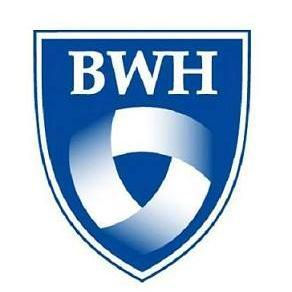预约演示
更新于:2025-05-07
AT1R x CD10
更新于:2025-05-07
关联
3
项与 AT1R x CD10 相关的药物作用机制 AT1R拮抗剂 [+1] |
最高研发阶段批准上市 |
首次获批国家/地区 美国 |
首次获批日期2015-07-07 |
作用机制 AT1R拮抗剂 [+1] |
在研机构 |
原研机构 |
非在研适应症 |
最高研发阶段申请上市 |
首次获批国家/地区- |
首次获批日期1800-01-20 |
作用机制 AT1R拮抗剂 [+1] |
在研机构- |
原研机构 |
在研适应症- |
最高研发阶段无进展 |
首次获批国家/地区- |
首次获批日期1800-01-20 |
359
项与 AT1R x CD10 相关的临床试验NCT06536309
Neprilysin Inhibition to Reduce Myocardial Fibrosis in Heart Failure With Preserved Ejection Fraction
Cardiac magnetic resonance imaging (MRI) measures of myocardial interstitial fibrosis (MIF) are elevated in heart failure with preserved ejection fraction (HFpEF) patients and associated with poor prognosis. Extracellular volume (ECV) is the most reproducible and best validated cardiac MRI measure of MIF. Sacubitril/valsartan reduces histological MIF in mice and levels of some extracellular matrix regulatory proteins in humans with HFpEF. However, the effect of sacubitril/valsartan on robust measures of MIF in humans is unknown. Demonstrating reductions in ECV with sacubitril/valsartan would clarify the mechanism of this approved medication. Given the borderline reduction in heart failure hospitalizations with sacubitril/valsartan and the heterogeneity of HFpEF pathophysiology, this result would suggest that neprilysin inhibition may particularly benefit HFpEF patients with greater MIF. The investigators propose a proof-of-concept clinical trial to evaluate the effect of neprilysin inhibition (sacubitril/valsartan vs valsartan alone) on cardiac MRI measures of fibrosis (principally ECV) and circulating protein levels.
开始日期2025-07-01 |
CTRI/2025/04/085308
TO STUDY THE CLINICAL RESPONSE AND SAFETY OF ANGIOTENSIN RECEPTOR- NEPRILYSIN INHIBITOR (SACUBITRIL/ VALSARTAN) IN PATIENTS WITH ADVANCED CHRONIC KIDNEY DISEASE AND HEART FAILURE WITH REDUCED EJECTION FRACTION - Nil
开始日期2025-05-02 |
NCT06704633
Health Status After Switching Angiotensin-converting Enzyme Inhibitors or Angiotensin Receptor Blockers to Sacubitril-valsartan in Patients with Heart Failure with Reduced Ejection Fraction from Rural Tanzania: an Interventional Study
Angiotensin-neprilysin inhibitors (ARNI) are beneficial in patients with heart failure with reduced ejection fraction. No study evaluating ARNI has been conducted in sub-Saharan Africa (except South Africa) yet, where heart failure is a major health problem. Before implementing ARNI in Tanzania, a study evaluating the benefit and safety of ARNI in Africans is needed. The aim of this interventional pre-post study is to evaluate the health status of symptomatic patients with heart failure with reduced ejection fraction who are under a chronic heart failure therapy, before and after switching angiotensin converting enzyme (ACE) inhibitors or angiotensin receptor blockers (ARB) to ARNI. Participants will be recruited at the Heart and Lung Clinic of the St Francis Regional Referral Hospital in Ifakara in rural Tanzania during a study period of 30 months, including 10 months of follow-up. A total of 238 participants will be included. The investigators hypothesize that health status, expressed by the Kansas City Cardiomyopathy Questionnaire summary score and 6-minute walking test, will improve after switching from ACE-inhibitors or ARB to ARNI. In Tanzania, sacubitril/valsartan is registered under the name Uperio®.
开始日期2025-05-01 |
申办/合作机构 |
100 项与 AT1R x CD10 相关的临床结果
登录后查看更多信息
100 项与 AT1R x CD10 相关的转化医学
登录后查看更多信息
0 项与 AT1R x CD10 相关的专利(医药)
登录后查看更多信息
55
项与 AT1R x CD10 相关的文献(医药)2024-04-01·Current Problems in Cardiology
Impact of angiotensin receptor-neprilysin inhibition (ARNI) in improving ejection fraction and left and right ventricular remodeling in heart failure
Review
作者: Xiao, Zongwei ; Huang, Xin ; Jiang, Fenglin ; Bhushan, Sandeep
2023-04-27·Biomedicines
A Combination of an Angiotensin II Receptor and a Neprilysin Inhibitor Attenuates Liver Fibrosis by Preventing Hepatic Stellate Cell Activation.
Article
作者: Iwai, Satoshi ; Suzuki, Junya ; Yoshiji, Hitoshi ; Namisaki, Tadashi ; Kitagawa, Koh ; Tsuji, Yuki ; Nishimura, Norihisa ; Fujinaga, Yukihisa ; Kubo, Takahiro ; Tomooka, Fumimasa ; Kaji, Kosuke ; Akahane, Takemi ; Shibamoto, Akihiko
2023-02-01·Cell Reports
Neprilysin-dependent neuropeptide Y cleavage in the liver promotes fibrosis by blocking NPY-receptor 1
Article
作者: Ortiz, Cristina ; Hieber, Christoph ; Tyc, Olaf ; Magdaleno, Fernando ; Klein, Sabine ; Trebicka, Jonel ; Uschner, Frank E ; Tetzner, Anja ; Keller, Ulrich Auf dem ; Hellerbrand, Claus ; Kraus, Nico ; Alfonso-Prieto, Mercedes ; Dietrich, Peter ; Torres, Sandra ; Brol, Maximilian ; Moore, Andrew ; Mira, Fabio ; Meier, Caroline ; Poglitsch, Marco ; Zeuzem, Stefan ; Reul, Winfried H ; Welsch, Christoph ; Gröschl, Stefanie ; Walther, Thomas ; Schierwagen, Robert
6
项与 AT1R x CD10 相关的新闻(医药)2025-03-07
·医药观澜
▎药明康德内容团队报道
心血管疾病依然是全球范围内面临的严重疾病挑战。根据2024年发表于心血管领域权威杂志European Journal of Preventive Cardiology上的一项研究预测,由于全球人口老龄化的推动,2025~2050年期间预计心血管患病率将增加90.0%,至2050年心血管死亡人数将达到3560万。由此可见该领域的临床治疗需求之大。
本文将盘点10款有望在2025年获NMPA批准上市的心血管疾病领域新药*,它们覆盖的适应症包括阵发性室上性心动过速、肺动脉高压、肥厚性心肌病、高血压、下肢缺血性疾病、卒中等。(*本文中“心血管疾病”的定义参考WHO的定义;本文统计范围为于2023年1月~2025年2月期间向CDE递交上市申请的新药;新药仅统计注册分类为1类、3.1类、5.1类的新药;仅盘点有望首次获批的新药,不含新适应症)
图片来源:123RF
Milestone公司、箕星药业:艾曲帕米鼻喷雾剂
作用机制:新型钙通道阻滞剂
适应症:阵发性室上性心动过速(PSVT)
艾曲帕米(etripamil)鼻喷雾剂是一款速效非二氢吡啶类L型钙通道阻滞剂(CCB)。2021年5月,箕星药业和Milestone达成独家许可协议,获得在大中华区开发和商业化该产品治疗阵发性室上性心动过速(PSVT)和其它心血管疾病的独家许可权。2025年1月,该产品的上市申请获得CDE受理,拟用于治疗PSVT。PSVT是一种以心脏电系统异常为特征的疾病,会导致患者出现意外的、症状严重的心动过速。根据箕星药业新闻稿介绍,患者可在无医疗监督的环境(例如在家)中,通过艾曲帕米鼻喷雾剂自行给药来快速终止急性PSVT发作。
人福医药:重组质粒-肝细胞生长因子注射液
作用机制:质粒DNA类药物
适应症:严重下肢缺血性疾病导致的肢体静息痛
重组质粒-肝细胞生长因子注射液(pUDK-HGF)是人福医药研发的一款质粒DNA类药物,该产品旨在以创新基因疗法开辟“治疗性血管新生”崭新路径,采用肌肉注射的方式,刺激注射部位肌细胞分泌肝细胞生长因子(HGF),促进血管新生、改善肢体血运,实现缺血性静息痛等临床症状的缓解。2024年12月,该产品的上市申请获得CDE受理,拟用于治疗严重下肢缺血性疾病导致的肢体静息痛。严重下肢缺血是外周动脉疾病最严重的阶段,肢体静息痛是其特征性临床表现之一,可能会引发抑郁、心血管事件、截肢甚至死亡等严重后果。对于此类患者的疼痛症状,通常以镇痛药物进行治疗,缺乏针对性的长期治疗手段。
默沙东(MSD):注射用sotatercept
作用机制:新型激活素信号抑制剂类生物制剂
适应症:肺动脉高压
Sotatercept是一款IIA型激活素受体(ActRIIA)融合蛋白。该产品已经于今年3月获得美国FDA批准上市,用于治疗肺动脉高压(PAH)。这款疗法此前被行业媒体Evaluate评为2024年潜在重磅疗法之一。
PAH是一种罕见、进行性、危及生命的血管疾病,当肺部的小动脉变厚并变窄时,会导致这些动脉内的压力增加,对心脏造成压力。PAH可引起心脏负荷明显增加,导致体力活动受限、心力衰竭和预期寿命缩短。Sotatercept将ActRIIA经过改造的细胞外域与抗体的Fc端融合在一起,可以阻断激活素与细胞膜上的受体结合,从而降低激活素介导的信号传导。在临床前研究中,它可以逆转肺动脉壁和右心室的重塑。2024年10月,注射用sotatercept在中国的上市申请获得CDE受理。
箕星药业、Cytokinetics公司:aficamten片
作用机制:心肌肌球蛋白抑制剂
适应症:肥厚型心肌病
Aficamten是Cytokinetics公司开发的新一代心肌肌球蛋白抑制剂,箕星药业与Cytokinetics公司达成合作在大中华区开发该药。这款创新疗法曾被行业媒体Evaluate列为值得关注的十大潜在重磅疗法之一。2024年10月,该产品的上市申请被CDE受理,并纳入优先审评,拟用于治疗症状性梗阻性肥厚型心肌病(oHCM)。这是一种心肌异常增厚的疾病,心肌增厚导致左心室流出道阻塞。Aficamten通过化学优化来改善药物治疗指数和药代动力学特征,减少每个心动周期中活性肌球蛋白产力横桥的数量,从而抑制与肥厚型心肌病相关的心肌过度收缩。临床前研究显示,aficamten可通过直接与心肌肌球蛋白在一个独特的选择性的变构结合位点结合,从而阻止肌球蛋白进入产力状态,以降低心肌收缩力。
诺思兰德:塞多明基注射液
作用机制:重组人肝细胞生长因子裸质粒注射液
适应症:严重下肢缺血导致的肢体溃疡
塞多明基注射液(代号NL003)是一款重组人肝细胞生长因子裸质粒注射液,是一种创新型基因治疗药物。2024年7月,该产品的上市申请获得CDE受理,拟用于治疗严重下肢缺血(下肢动脉硬化闭塞症、血栓闭塞性脉管炎和糖尿病下肢缺血)导致的肢体溃疡。在下肢缺血部位的局部肌肉注射时,塞多明基注射液(内含重组人肝细胞生长因子裸质粒)进入骨骼肌细胞内,利用细胞的蛋白质表达机制,表达质粒携带的目的基因,并分泌出两种肝细胞生长因子(HGF)蛋白异构体,形成新生血管和侧枝循环,增加缺血部位的局部血流量,从而达到治疗下肢动脉缺血性疾病的作用。
上海医药、田边三菱制药株式会社:苹果酸司妥吉仑片
作用机制:肾素抑制剂
适应症:原发性高血压
苹果酸司妥吉仑片(I001片、SPH3127)由上海医药和日本田边三菱制药株式会社合作研发,为一款小分子肾素抑制剂。该产品通过对肾素的直接抑制,拮抗由肾素-血管紧张素-醛固酮系统(RAAS)过度激活造成的血压上升,适用于原发性高血压的治疗。2024年4月,该产品的针对高血压适应症的NDA上市申请重新递交,并获得CDE受理。
勃林格殷格翰(Boehringer Ingelheim):注射用替奈普酶
作用机制:新型溶栓药物
适应症:4.5小时内急性缺血性卒中
根据勃林格殷格翰公开资料,替奈普酶是该公司经典溶栓产品阿替普酶的基因工程变构体,为一款新型溶栓药物,此前已在全球多个国家和地区获批用于ST段抬高型心肌梗死(STEMI)的溶栓治疗。2024年1月,注射用替奈普酶在中国的上市申请获得CDE受理,拟用于治疗4.5小时内急性缺血性卒中。
阿替普酶是静脉溶栓中的标准药物治疗方法。替奈普酶与阿替普酶仅有3个氨基酸存在差异,其作用机制已得到证实。相比于阿替普酶,替奈普酶给药方便,可在5~10 s内单次静脉推注给药,无需使用静脉输液泵,有利于治疗。
阿斯利康(AstraZeneca)/百特(Baxter):andexanet alfa
作用机制:结合因子Xa抑制剂并迅速逆转其抗凝作用
适应症:逆转FXa抑制剂的抗凝血作用
Andexanet alfa是一种经过精心设计的重组蛋白,能够高度亲和力与口服和注射FXa抑制剂结合,从而快速逆转其抗凝效果,并帮助实现止血。该产品在2018年首次获得加速批准并上市,用于正在使用利伐沙班和阿哌沙班治疗的患者,作为他们因为威胁生命或不受控制的出血而需要逆转抗凝时的解毒剂。公开资料显示,阿哌沙班、利伐沙班等FXa抑制剂广泛用于预防和治疗与心血管疾病相关的血栓栓塞,尽管安全性和有效性较好,但临床上缺乏能迅速逆转其抗凝作用的解毒剂,以降低治疗相关出血风险、满足这些患者的紧急手术需求。2023年12月,阿斯利康和百特共同申报的注射用andexanet alfa在中国的上市申请获得CDE受理。
信立泰:沙库巴曲阿利沙坦钙片
作用机制:血管紧张素受体脑啡肽酶抑制剂(ARNI)
适应症:轻、中度原发性高血压
沙库巴曲阿利沙坦钙片(S086)是信立泰在研的1类新药,为一种血管紧张素II受体-脑啡肽酶双重抑制剂(ARNi)。2023年7月,该产品的上市申请获得CDE受理,拟用于治疗轻、中度原发性高血压。研究显示,ARNi类药物在抑制脑啡肽酶的同时可阻滞血管紧张素II1型受体(AT1),以增加循环中利钠肽的水平,进而发挥其促尿钠排泄、利尿、舒张血管、降低交感神经张力、抗细胞增殖、抗心肌肥厚及调节代谢作用。同时,AT1阻滞可以减弱血管收缩、减少水钠潴留、抑制心肌肥厚和抑制心血管阻止不良重构作用。
希望这些新药早日来到患者身边,尽快造福患者!
参考资料:
[1]中国国家药监局药品审评中心(CDE)官网.
[2]各公司官网及公开资料
[3]Chong B, Jayabaskaran J, et al., (2024). Global burden of cardiovascular diseases: projections from 2025 to 2050. Eur J Prev Cardiol. doi: 10.1093/eurjpc/zwae281.
本文来自药明康德内容团队,欢迎个人转发至朋友圈,谢绝媒体或机构未经授权以任何形式转载至其他平台。转载授权或其他合作需求,请联系wuxi_media@wuxiapptec.com。
免责声明:药明康德内容团队专注介绍全球生物医药健康研究进展。本文仅作信息交流之目的,文中观点不代表药明康德立场,亦不代表药明康德支持或反对文中观点。本文也不是治疗方案推荐。如需获得治疗方案指导,请前往正规医院就诊。
基因疗法申请上市
2025-01-23
·摩熵医药
注:本文不构成任何投资意见和建议,以官方/公司公告为准;本文仅作医疗健康相关药物介绍,非治疗方案推荐(若涉及),不代表平台立场。任何文章转载需要得到授权。
近年来,随着我国药品专利链接制度的不断完善,原研药与仿制药之间的平衡成为医药产业发展的关键。一方面,延长创新药专利保护期有助于激励药物创新;另一方面,鼓励仿制药企业通过专利挑战和规避,提高药品可及性,促进产业高质量发展。
在此背景下,摩熵咨询发布的《专利即将到期五大重磅小分子药品,国内仿制药“战况”几何》研究报告,对五款即将专利到期的重磅药品进行了盘点和分析。本文将重点介绍其中两款药品:ENTRESTO®(诺欣妥)、TRELEGYELLIPTA®(全再乐),并分析其国内仿制药研发格局和专利挑战现状,为业界提供一份宝贵的战略参考。
一、
ENTRESTO®(诺欣妥):心血管领域的创新药
1.ENTRESTO®药物简介及重要交易事件
ENTRESTO®(诺欣妥),通用名为沙库巴曲缬沙坦钠片,活性成分为沙库巴曲和缬沙坦三钠半五水合物。原研企业为Novartis(诺华),首次于2015年7月在美国获批上市,是全球首个血管紧张素受体脑啡肽酶抑制剂(ARNI)类药物,用于治疗心力衰竭和原发性高血压。摩熵医药数据库显示,该药物于2017年7月26日在中国获批进口。
沙库巴曲缬沙坦钠片研发状态及历程图片来源:摩熵医药全球药物研发数据库
沙库巴曲缬沙坦钠片含有脑啡肽酶抑制剂沙库巴曲和血管紧张素受体阻滞剂缬沙坦,可通过LBQ657(前体药物沙库巴曲的活性代谢物)抑制脑啡肽酶(中性内肽酶;NEP),并通过缬沙坦阻断血管紧张素II1型(AT)受体。
自上市以来,诺华已将沙库巴曲缬沙坦钠片分销权授予多家公司,其重要交易事件包括:2016年11月,诺华将其在西班牙的分销权授予LaboratoriosFarmaceuticosRoviSA;2020年2月,诺华与日本大冢制药达成商业化许可协议(原研沙库巴曲缬沙坦钠片在日本的原研代理公司为日本大冢制药);2022年4月,DrReddy‘sLaboratories从诺华处购买获得原研沙库巴曲缬沙坦钠片在印度的商业权益。
2.临床应用与指南推荐:心衰和原发性高血压治疗药物
沙库巴曲缬沙坦钠,是国内外多个指南一致推荐的心衰和原发性高血压治疗药物。
从临床研究成果来看,在心力衰竭治疗方面,2016年欧洲心脏病学会以及2017年美国心脏病学会/美国心脏协会更新的心衰指南,均把沙库巴曲缬沙坦钠作为HFrEF的Ⅰ类推荐,而且《中国心力衰竭诊断和治疗指南2018》《慢性心力衰竭基层诊疗指南(2019年)》和《基层心血管病综合管理实践指南2020》也都明确推荐了ARNI(沙库巴曲缬沙坦钠)在HFrEF患者中的应用。
2021年1月,美国心脏病学会更新的优化心衰治疗专家共识中,建议HFrEF患者在不使用ACEI/ARB预处理的情况下,可优先使用该药。此外,2021年2月,FDA批准了沙库巴曲缬沙坦钠扩大适应证的申请,允许其用于降低成年人慢性心衰患者的心血管死亡和心衰住院风险,涵盖HFpEF患者。
在高血压治疗领域,2020年国际高血压学会发布的全球高血压实践指南指出,沙库巴曲缬沙坦钠也适用于高血压人群,2021年2月发表的《沙库巴曲缬沙坦钠在高血压患者中临床应用中国专家建议》更是建议将其用于原发性高血压病患者的降压治疗,尤其是老年高血压、盐敏感性高血压、高血压合并心衰、高血压合并左心室肥厚、高血压合并慢性肾脏病(1~3期)和高血压合并肥胖的患者。
沙库巴曲缬沙坦钠国内外相关指南推荐意见
此外,还有充分的循证证据支持沙库巴曲缬沙坦钠的降血压效果以及靶器官保护作用。
沙库巴曲缬沙坦钠部分降压询证证据列表
3.市场表现:心血管领域突破性创新药,原研产品全球销售额近90亿美元
作为全球首款心血管治疗领域的突破性创新药,近年来原研沙库巴曲缬沙坦钠片全球市场销售额高速增长,2023年达88.5亿美元,国内市场整体也呈上升趋势,2023年总销售额超3亿美元,但在全球市场中占比较小,约4.2%。
数据来源:摩熵医药销售数据库
沙库巴曲缬沙坦钠已获批的适应症包括心力衰竭、原发性高血压和高血压病,其中心力衰竭在中、美、日、欧均已获批,高血压在中国和日本已获批。
摩熵医药数据库显示,截至2024年10月,除已获批的适应症外,沙库巴曲缬沙坦钠还有其他心血管疾病领域适应症在研发中,其中心肌梗死在中国和美国已进入III期临床阶段,中国的III期临床试验已完成。
沙库巴曲缬沙坦钠片全球主流国家/地区研发现状图片来源:摩熵咨询《专利即将到期五大重磅小分子药品,国内仿制药“战况”几何》
4.原研专利情况及挑战历程:组合物专利全部无效,晶型专利可能延期
原研沙库巴曲缬沙坦钠片在中国的核心专利包括组合物专利(公开号CN102091330B)和晶型专利(公开号CN101098689B(母案)CN102702119B(分案)),组合物专利早在2018年1月已宣告全部无效,晶型专利部分无效,有效部分预计2026年11月8日到期。
沙库巴曲缬沙坦钠片原研中美核心专利信息一览
沙库巴曲缬沙坦钠片原研化合物/组合物专利已于2018年1月3日被宣告全部无效,尽管原研公司诺华对此判决持有异议并先后上诉至北京知识产权法院及最高人民法院,但最终在2021年6月30日的二审判决中维持了原判,确认该专利全部无效。
沙库巴曲缬沙坦钠片原研中国核心专利无效挑战历程
与此同时,沙库巴曲缬沙坦钠片原研2.5水合物晶型专利也接连遭受了来自深圳信立泰药业、石药集团欧意药业及南京正大天晴制药的无效挑战,并于2021年7月2日被宣告部分无效。
此外,南京一心和医药自主研发出了沙库巴曲缬沙坦钠新晶型,该晶型为3水合物,已做到与原研2.5水合物等效,考虑到可能仍有侵权风险,于2023年9月28日,南京一心和医药对原研0-3水合物晶型专利发起了无效挑战,2024年8月8日该专利被宣告部分无效,2024年9月3日无效宣告结案。
值得一提的是,沙库巴曲缬沙坦钠片原研晶型专利经历诸多无效挑战至今未能被全部无效,有效部分原本预计2026年11月8日到期,但诺华已提交专利期限补偿请求,目前已进入审查,释放出专利保护期可能延长的信号。
5.仿制药研发与竞争情况:仿制研发热潮兴起,国内50+家企业群雄逐鹿
专利挑战与仿制研发热潮兴起,原研公司诺华采取和解的方式维护专利权益。
沙库巴曲缬沙坦钠片的问世在心血管领域开辟了一片新的蓝海,众多仿制企业对这块“肥肉”虎视眈眈,开始着手研发仿制药品,实力雄厚的企业纷纷对原研专利发起无效挑战,意图抢占首仿地位,其他众多企业也趁势入局,引发了仿制热潮。
摩熵医药中国药品审评数据库显示,截至2024年9月20日,已有13家仿制药企业获得批文,21家企业正在申报注册中,另外还有15家企业正在开展BE试验。
经统计,目前已获得仿制药批文的13家企业中,有4家对原研晶型专利明确登记了3类声明,有1家(浙江昂利康制药)登记了4.2类,1家(江苏华瀚医药)登记了2类,有7家企业未登记。
值得注意的是江苏华瀚获得了原研专利实施许可,可实现提前上市销售;正大天晴获得原研0-3水合物晶型专利实施许可,但推测仍需等待2.5水合物晶型专利过期后才能上市销售。申报注册的21家企业中20家登记了3类声明,1家(江苏利泰尔药业)登记了4.2类声明,经查询,江苏利泰尔药业与自主研发新晶型的南京一心和医药同属方生和医药的子公司。
面对仿制药企的专利挑战和仿制热潮,诺华与部分仿制药企达成和解协议,以避免专利悬崖,维持专利权益,降低市场损失。
沙库巴曲缬沙坦钠片仿制药中国批准文详情
沙库巴曲缬沙坦钠片中国新申报注册详情(想查看表格详细内容,请前往摩熵咨询官网获取报告全文)
二、
TRELEGY ELLIPTA®(全再乐):新一代COPD和哮喘三联疗法
1.TRELEGY ELLIPTA®药物简介及重要交易事件
TRELEGY ELLIPTA®(全再乐),通用名为氟替美维吸入粉雾剂,由GSK(葛兰素史克)研发,于2017年9月首次在美国获批上市,首次获批适应症为慢性阻塞性肺疾病(COPD),2020年9月,哮喘适应症获FDA批准。2019年11月4日原研在中国获批进口。
氟替美维吸入粉雾剂是首个每日一次的单吸入器三联疗法制剂,由糠酸氟替卡松、乌美溴铵和三苯乙酸维兰特罗三个活性成分组成。糠酸氟替卡松是一种合成三氟化皮质类固醇,具有抗炎活性;乌美溴铵是一种长效毒蕈碱拮抗剂,具有支气管扩张作用;维兰特罗是一种长效肾上腺素受体激动剂,具有松弛支气管平滑肌作用。
GSK与Theravance(现为Innoviva Inc)长期合作,共同开发该药物,并在全球范围内推广。重要交易事件包括:2002 年 11 月,Theravance 与 GSK 结成联盟开发用于治疗呼吸系统疾病的长效 β-2 激动剂;2017 年 9 月,Theravance 获得氟替美维吸入粉雾剂在欧洲的经济权益;2020 年 9 月,双方合作开发的哮喘新适应症获美国 FDA 批准。
2.临床应用:氟替美维吸入粉雾剂与上一代二联疗法相比临床优势显著
与氟替卡松糠酸酯/维兰特罗和乌美溴铵/维兰特罗相比,氟替美维吸入粉雾剂治疗显示肺功能显著改善。第52周,氟替美维吸入粉雾剂与氟替卡松糠酸酯/维兰特罗相比,FEV1谷值(给药前)与基线相比的平均变化为97mL(95%CI:85,109;P<0.001),氟替美维吸入粉雾剂与乌美溴铵/维兰特罗相比,FEV1谷值与基线相比的平均变化为54mL(95%CI:39,69;P<0.001)。
一项试验分别比较了氟替美维吸入粉雾剂与糠酸氟替卡松/维兰特罗和乌美溴铵/维兰特罗二联疗法治疗中度和中度COPD的病情加重情况,试验主要终点为平均年加重发生率。结果显示,与糠酸氟替卡松/维兰特罗相比,使用氟替美维吸入粉雾剂治疗年加重发生率可显著降低15%;与乌美溴铵/维兰特罗相比,可显著降低25%。
3.市场表现与研发进展:新一代COPD和哮喘三联疗法,全球销售额超60亿美元
氟替美维吸入粉雾剂是FDA批准的首款治疗COPD和哮喘的每日一次单吸入器三联疗法制剂,与上一代二联疗法(糠酸氟替卡松/维兰特罗、乌美溴铵/维兰特罗)相比可显著改善COPD患者肺功能,缓解症状和急性加重,降低死亡率。
得益于其显著的临床优势,近年来原研氟替美维吸入粉雾剂全球销售额节节攀升,增速有放缓趋势,截至2023年末全球销售额达64.51亿美元,中国市场销售额约0.37亿美元,仅占全球市场的0.57%。
氟替美维吸入粉雾剂目前仅用于治疗COPD和哮喘,未开发其他新适应症。COPD适应症在全球主流国家/地区均已获批,哮喘适应症在美国、日本已获批,但在欧盟申请扩哮喘适应症未被批准,理由是欧洲药品管理局认为原研公司提供的临床证据不足以证明其对哮喘的疗效。目前,哮喘适应症在中国还处于III期临床阶段。
4.专利情况与仿制前景:正大天晴或将成为新一代三联疗法的仿制头马
氟替美维吸入粉雾剂为药械一体化产品,在中国的核心专利包括活性成分化合物专利、药物组合物专利以及给药装置专利。
氟替美维吸入粉雾剂原研中美核心专利信息一览
目前,其3种活性成分化合物专利以及3种成分的药物组合物专利在中国均已处于无效状态,给药装置专利权预计2026年7月27日届满失效,专利保护期已不足两年,但原研在专利信息登记平台登记的专利信息不包含给药装置专利。
国内暂无仿制药研发信息,推测原因可能一方面是药械一体化吸入制剂研发难度较大,另一方面是参比制剂2024年8月28日刚正式公布。
正大天晴作为国内吸入药物药械一体化设计与制造、哮喘精准诊断药物领域领先企业,已跟进研发COPD/哮喘二联疗法——糠酸氟替卡松维兰特罗吸入粉雾剂和乌美溴铵维兰特罗吸入粉雾剂多年,目前两款药物处于BE试验阶段。由于具有一定的研发基础,推测正大天晴有望成功突破氟替美维吸入粉雾剂(氟替美维吸入粉雾剂)的给药装置专利壁垒,成为新一代三联疗法的仿制头马。
结语
随着ENTRESTO®、TRELEGY ELLIPTA®等重磅小分子药品专利的即将到期,仿制药企业迎来了新的发展机遇。然而,专利挑战与仿制研发的道路并非一帆风顺,需要企业具备强大的研发实力和战略眼光。同时,政府也应继续完善药品专利链接制度,为原研药企业和仿制药企业提供公平、透明的竞争环境,共同推动医药产业的健康发展。
END
本文为原创文章,转载请留言获取授权
专利即将到期五大重磅小分子药品
下期内容预告
一、三大重磅小分子药专利到期,BI、BMS巨头面临挑战,百亿市场迎变局
二、5款重磅小分子药品专利到期全解析:专利攻防策略、专利制度意义和影响
近期将持续更新,敬请期
近期热门资源获取
【摩熵咨询】以终为始 ,数据助力高质量立项-20240527
【摩熵咨询】市场洞察,精准决策,医疗大数据赋能药企市场准入-2024.5.23
【摩熵咨询】CGT产业现状与未来趋势蓝皮书-20240530
【摩熵咨询】2024年十大重磅小分子药物-20240530
【摩熵咨询】-吸入制剂壁垒高玩家少,国产替代空间广阔-20240604
【摩熵咨询】中药行业现状与未来趋势白皮书-2024.7.8
【摩熵咨询】2023年医药企业综合实力排行榜-20240723
【摩熵咨询】跨越国界,引领创新:中国药企出海的布局实践-202408
近期更多摩熵咨询热门报告,识别下方二维码领取
联系我们,体验摩熵医药更多专业服务
会议
合作
园区
服务
数据库
咨询
定制
服务
媒体
合作
👆👆👆点击上方图片,即可开启摩熵化学数据查询
点击阅读原文,申请摩熵医药企业版免费试用!
专利到期
2023-11-06
·药智网
2023年10月27日,国家药监局网站显示,江苏华瀚医药科技有限公司(以下简称“华瀚医药”)申报的沙库巴曲缬沙坦钠片(商标名:悦欣妥®)已获批上市。图1. 悦欣妥®沙库巴曲缬沙坦钠片获批图片来源:国家药监局官网截图据了解,华瀚医药的悦欣妥®已获得诺华原研专利的完整授权,可以在原研专利保护期内提前合法上市。悦欣妥®与原研药物具有相同的晶型结构,其获批上市将为中国心衰和高血压患者提供高品质且更具性价比的药物选择,有助于减轻患者经济负担、缓解国家医保压力,并提高一线创新药的可及性。心衰和高血压一线用药市场前景广阔沙库巴曲缬沙坦钠片在治疗心衰和高血压上展现出明确的疗效和良好的安全性,得到了美国心脏病学院(ACC)、美国心脏协会(AHA)、美国心衰学会(HFSA)和欧洲心脏病学会(ESC)等权威学会的推荐。在中国,沙库巴曲缬沙坦钠片被《心衰指南》推荐为能显著降低心衰患者死亡率的首选药物,并被《2023年临床指南》列为高血压的一线治疗药物。根据诺华公布的财报,自2015年上市以来,沙库巴曲缬沙坦钠片的全球销售额持续增长。2022年,其全球销售额达到46.44亿美元,同比增长37%。2023年上半年,销售额为29.15亿美元,同比增长35%。图2. Entresto 2023上半年销售数据图片来源:诺华2023H1财报悦欣妥®的获批上市将为中国广大心衰和高血压患者带来高品质且更具性价比的药物选择,有助于减轻患者经济负担、缓解国家医保压力,提高一线用药的可及性。悦欣妥®获得原研专利许可可合法提前上市沙库巴曲缬沙坦钠片是诺华研发的治疗心衰和高血压的创新药物。该药物链接的中国专利(专利号:ZL200680001733.0及ZL201210191052.2)的保护期将持续到2026年11月。华瀚医药已获得诺华在中国的两项专利的完整授权,因此华瀚医药开发的4类仿制药沙库巴曲缬沙坦钠片(商标名:悦欣妥®)可以在专利保护期内在中国合法上市销售。图3. 悦欣妥®沙库巴曲缬沙坦钠片产品包装,仅供参考,以上市包装为准图片来源:华瀚医药与原研药物晶型完全一致药效得到临床验证沙库巴曲缬沙坦钠片的创新性之一是其具有特定的化学和晶体结构。从分子结构上看,其活性成分LCZ696是由沙库巴曲与缬沙坦按1:1摩尔比例结合而成的盐复合物晶体,每个药物分子含有2.5个结晶水。作为一种具有特定化学组成和稳定晶型的超分子复合物,这种共晶结构不仅确保了片剂的储存稳定性,还增强了缬沙坦在人体内的生物利用度。 图4. 沙库巴曲与缬沙坦钠片分子式图片来源:FDA官网悦欣妥®晶型结构和诺华的参比制剂一致。其独特的共晶设计已被多个跨国临床试验验证疗效,并被医学界广泛推崇用于心血管事件的预防及治疗。在国际医药法规逐步重视原料药一致性(API sameness)当前,与参比制剂晶型一致的悦欣妥®,将成为医患双方放心的新选择。悦欣妥®的成功关键:国际化和知识产权保护沙库巴曲缬沙坦钠片具有巨大的药物价值,成为国内众多药企竞争的焦点。截止到目前,华瀚医药是获得原研完整许可、可以在原研专利保护期内合法提前上市的药企。华瀚医药之所以能取得这样的成功,与其国际化的背景、全球化的视野及资源有关。公开资料显示,华瀚医药成立于2019年10月24日,其主要股东为中国台湾上市公司易威生医科技股份有限公司(简称“易威生医”)。易威生医是一家在全球布局的生物科技公司。易威生医的美国子公司完成了悦欣妥®的研发。随后,华瀚医药在中国完成了技术转移、生产和商业化。此外,悦欣妥®能够合法提前上市,可追溯至2018年8月,南京华讯知识产权顾问有限公司与诺华在专利无效诉讼中达成和解协议,获得“沙库巴曲缬沙坦钠片”在国内提前上市的许可,并独家转许可给予华瀚医药,使其成为国内合法取得原研许可上市销售的仿制药。2021年7月,《药品专利纠纷早期解决机制实施办法》颁布,标志着我国“专利链接制度”正式落地。2023年9月,国家知识产权局发布通知:“严格落实相关执行措施,对医药集中采购、电子商务等领域行政裁决认定侵权行为成立的,会同相关部门依法依规采取不予挂网或撤网、删除链接等措施,及时制止侵权行为。”随着中国医药市场在知识产权保护方面的法律制度日益完善,悦欣妥®的上市无疑开创了中国患者更早获得创新药物的新模式。据不完全统计,2022年国内生物制药企业披露的许可引进(License-in)交易、对外许可(License-out)交易、本土许可交易分别为90笔、52笔以及49笔,交易总额高达361.5亿美元。展望未来,具有国际化平台和前瞻性产品的药企或将主导全球市场竞争。继悦欣妥®的获批上市,华瀚医药凭借集团的资源,继续加大研发投入,引进更多高质量、高技术含量的医药品种进入中国市场,为患者提供更多优质的治疗选择。来源 | 华瀚医药(药智网获取授权转载)责任编辑 | 八角声明:本文系药智网转载内容,图片、文字版权归原作者所有,转载目的在于传递更多信息,并不代表本平台观点。如涉及作品内容、版权和其它问题,请在本平台留言,我们将在第一时间删除。商务合作 | 王存星 19922864877(同微信) 阅读原文,是受欢迎的文章哦
专利到期AHA会议财报
分析
对领域进行一次全面的分析。
登录
或

生物医药百科问答
全新生物医药AI Agent 覆盖科研全链路,让突破性发现快人一步
立即开始免费试用!
智慧芽新药情报库是智慧芽专为生命科学人士构建的基于AI的创新药情报平台,助您全方位提升您的研发与决策效率。
立即开始数据试用!
智慧芽新药库数据也通过智慧芽数据服务平台,以API或者数据包形式对外开放,助您更加充分利用智慧芽新药情报信息。
生物序列数据库
生物药研发创新
免费使用
化学结构数据库
小分子化药研发创新
免费使用





